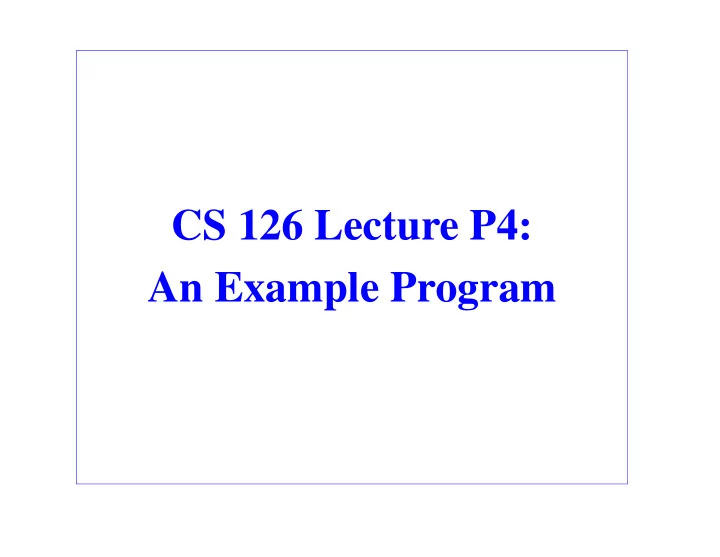

CS 126 Lecture P4: An Example Program
Outline • Introduction • Program - Data structures - Code • Conclusions CS126 5-1 Randy Wang
Goals • Gain insight of how to put together a “large” program • Learn how to read a “large” program • Appreciate the central role played by data structures • Master the manipulation of linked lists (pointers) CS126 5-2 Randy Wang
Central Role of Data Structures • How to choose data structure - Ease of programming - Time efficient - Space efficient • Design of algorithms is largely design of data structures - Data structures largely determine the algorithms CS126 5-3 Randy Wang
Outline • Introduction • Program - Data structures - Code • Conclusions CS126 5-4 Randy Wang
Represent A Single Card card % 13 : face value card / 13 : kind CS126 5-5 Randy Wang
Represent the Decks declare pointer type declare link element type declare pointer variables dereferencing • Why linked lists? - We want you to learn linked lists :) - Little need for fast random access of the deck, mostly at the top and bottom of the stack CS126 5-6 Randy Wang
Outline main shuffle play deal WAR code • Introduction • Program - Data structures - Code • Conclusions CS126 5-8 Randy Wang
main() returns a stack of cards • Revisiting the concept of top-down design • Revisit how to read code • All your functions should be this short and readable (although the lecture notes don’t always practice this) CS126 5-9 Randy Wang
Goal: create a linked list of random cards start with sorted cards time exchange index of the card to exchange with
fill array with sorted cards for each card in the array shuffle pick a random card in front of it swap this and the random card array start the deck with the first card for each card in the array build add this card to the bottom of deck linked list mark the end of the deck
Demo Part of shuffle() CS126 5-12 Randy Wang
Outline main play shuffle deal WAR code • Introduction • Program - Data structures - Code • Conclusions CS126 5-13 Randy Wang
“move” one card from deck to A pile “move” one card from deck to B pile As long as the deck is not empty move one more from deck to A stop if the deck is empty move one more from deck to B end of piles are marked
Demo deal() CS126 5-15 Randy Wang
Take one card from each of the A, B piles and form a 2-card stack (Ttop, Tbot). Put the 2-card stack at the bottom of the A pile
Demo play() CS126 5-17 Randy Wang
move a number of cards from A pile to T pile peek at top of A pile
Outline • Introduction • Program - Data structures - Code • Conclusions CS126 5-20 Randy Wang
Stuff We Have Learned in This Lecture • The process of constructing a “complex” program in a top- down fashion • Reading a “complex” program to trace its top-down structure • Judicious algorithm design starts with judicious choice of data structures • Good examples of linked list (and pointer) manipulation - Draw pictures to read and write pointer codes CS126 5-23 Randy Wang
Recommend
More recommend